Status of Women in the New United States
In the American colonies it was not uncommon for women to pursue various occupations, such as printers, innkeepers, merchants and teachers. Women were excluded from political activities, but a few women, like Mercy Otis Warren and Abigail Adams, entered the political arena as public figures. Were women always treated fairly?
Remember the Ladies
On March 31, 1776 Abigail Adams wrote a celebrated letter to husband John, who was in Philadelphia serving in the Continental Congress, which would produce the Declaration of Independence three months later. In an age when women were seen as strictly domestic beings, the letter shows Abigail’s boldness and insight as she urged her husband Remember the Ladies, to grant women more rights, as he helped shape the new national government.
Excerpt of Abigail’s letter:
I long to hear that you have declared an independency – and by the way in the new Code of Laws which I suppose it will be necessary for you to make I desire you would Remember the Ladies, and be more generous and favorable to them than your ancestors. Do not put such unlimited power into the hands of the Husbands. Remember all Men would be tyrants if they could. If particular care and attention is not paid to the Ladies we are determined to foment a Rebelion, and will not hold ourselves bound by any Laws in which we have no voice, or Representation.
That your Sex are Naturally Tyrannical is a Truth so thoroughly established as to admit of no dispute, but such of you as wish to be happy willingly give up the harsh title of Master for the more tender and endearing one of Friend. Why then, not put it out of the power of the vicious and the Lawless to use us with cruelty and indignity with impunity? Men of Sense in all Ages abhor those customs which treat us only as the vassals of your Sex. Regard us then as Beings placed by providence under your protection and in immitation of the Supreme Being make use of that power only for our happiness.
John Adams’ rather arrogant response to his wife’s request:
Depend upon it, we know better than to repeal our masculine systems. Although they are in full Force, you know they are little more than Theory. We dare not exert our Power in its full Latitude. We are obliged to go fair, and softly, and in Practice you know We are the subjects. We have only the Name of Masters, and rather than give up this, which would completely subject Us to the Despotism of the Petticoat, I hope General Washington, and all our brave Heroes would fight.
Abigail Adams replied on May 7, 1776:
I can not say that I think you very generous to the Ladies, for whilst you are proclaiming peace and good will to Men, Emancipating all Nations, you insist upon retaining an absolute power over Wives. But you must remember that Arbitary power is like most other things which are very hard, very liable to be broken – and notwithstanding all your wise Laws and Maxims we have it in our power not only to free ourselves but to subdue our Masters, and without violence throw both your natural and legal authority at our feet.
Colonial Women
The vast majority of white women in the eighteenth century spent their days performing many arduous tasks in and around their rural homes. By far the most dangerous work they performed, however, was bearing children. On average those women gave birth to between five and eight offspring, often in between additional pregnancies that ended in miscarriages. Roughly one in eight could expect to lose their lives in childbirth, and numerous others lived through the experience only to watch their infants die.
Women did not have any political voice in colonial America, and some chafed under the restrictions placed on them. A movement began to improve the education of women to give them more means to support themselves. Both male and female authors in the Revolutionary era began to call for improvements to female education, arguing that many major differences between the sexes hinged on access to learning.
This was a point that essayist and early American feminist Judith Sargent Murray made in her essay ‘On the Equality of the Sexes’ (1779):
Will it be said that the judgment of a male of two years old is more sage than that of a female’s of the same age? I believe the reverse is generally observed to be true. But from that period what partiality! how is the one exalted, and the other depressed, by the contrary modes of education which are adopted! the one is taught to aspire, and the other is early confined and limited. As their years increase, the sister must be wholly domesticated, while the brother is led by the hand through all the flowery paths of science…
Murray’s writings became quite popular, and she went on to publish additional feminist essays, such as ‘On the Domestic Education of Children,’ that focused on women’s education and the equal value men and women should have. Murray maintained that while society must be based on a strict adherence to order – political, social, family and personal order – women’s place within that order must be changed.
Many male citizens were willing to accept improvements in female education, but most drew the line at changing marriage laws. Marriage had long been understood not simply as a personal commitment between two people, but as the underpinnings of social and political order. A man derived his civic status by becoming a father and head of household who represented his wife and children in public.
Status of Single Women
Unmarried women, including widows had the legal right to live where they pleased and to support themselves in any occupation that did not require a license or a college degree. Single women could enter into contracts, buy and sell real estate or accumulate personal property, which consisted of everything that could be moved – cash, stocks and bonds, livestock and slaves. So long as they remained unmarried, women could sue and be sued, write wills, serve as guardians, and act as executors of estates.
But the revolutionary emphasis on equality brought some important changes in women’s inheritance rights. State lawmakers everywhere abolished primogeniture and the tradition of double shares of a parent’s estate, inheritance customs that favored the eldest son. Instead, equal inheritance for all children became the rule – a big gain for daughters.
However, life for single women was seldom easy. If an unmarried woman was lucky enough to be financially independent, she was still looked upon as an oddity and called a spinster. Otherwise, she was dependent upon the males in her family, and spent her life moving from one relative’s home to the another, never feeling welcome anywhere.
Status of Married Women
Marriage changed women’s legal status dramatically. Upon marriage, women ceased to have any independent legal, political or economic existence. Under the legal doctrine of coverture, a wife became a feme covert and her identity was absorbed into that of her husband, symbolized by her taking of his name. A wife could not bring suit in court, sign a legally binding contract, vote, or acquire property or income in her own name.
However, one rule mitigated some of the worst effects of coverture. A married woman had the right to be maintained in a manner commensurate with her husband’s social status. If he refused to provide for her appropriately, she could sue and win support from the courts. While waiting for the court’s judgment, she was permitted to run up charges at local stores and taverns – and her husband had to pay for them. Judges consistently applied this rule, called the doctrine of necessities, in order to prevent men from neglecting their wives.
But the courts could not stop husbands from gambling or making bad investments. Women had no protection when their husbands proved irresponsible. If creditors pursued a husband for debts, his wife was entitled to keep only the bare necessities of life. This was usually defined as two dresses (so she would have one to wear while the other was being washed), cooking utensils and a bed.
Women’s rights to real property – the lands and buildings that constituted most wealth in the early national period – were more extensive than their rights to personal property. A husband could not sell or mortgage the realty his wife brought to their marriage without her consent. He could use it, but he could not convey it because a woman’s real estate, generally inherited from her father, was meant to stay in the family and descend through her to her children.
A wife also had important rights to the real property that her husband brought to the marriage or purchased afterwards. He could not sell or mortgage it unless she signed a statement signifying her free consent, which was recorded with the deed. Courts were careful to ensure that a wife signed a conveyance of her own free will and not because of pressure from her husband.
One of the most important rights of a married woman was dower, which was designed to provide her with support during widowhood. It consisted of a life estate in one-third of the husband’s real property if there were children and one half if there were not. A life estate did not mean actual ownership of the property. It was meant only to provide for the wife as her husband would have done had he lived, under a legal system that recognized her position of dependency within the family.
Women Lost Rights in the Early Republic
After independence from England was declared in 1776, each of the Thirteen Colonies established their own state constitutions. Therefore, state law rather than federal law governed women’s rights in the early republic (1776-1830), and much depended upon where a woman lived and the social circumstances in her region of the country. In every state, the legal status of women depended upon marital status.
Although women had been voting in some states since the colonial era, other states denied women that right. As early as 1756 in Massachusetts, Lydia Chapin Taft cast a ballot in the local town hall meeting in place of her deceased husband. However, she and other women lost the right to vote when the new Massachusetts state constitution took effect on March 2, 1780. Women also lost the right to cast their ballot in New York in 1777 and in New Hampshire in 1784.
Women got the vote in New Jersey on a technicality. The 1776 New Jersey constitution did not specify the gender of those eligible for the franchise, but permitted all persons worth over fifty pounds to vote. Women who met the property qualifications were allowed to vote, but not married women (anything they owned or earned belonged to their husbands). In 1790, the law was revised to specifically include women, but in 1807 the law was again changed to exclude them.
When the new U.S. Constitution went into effect on March 4, 1789, concern over individual liberties gave rise to the adoption of the Bill of Rights (the first ten amendments), but those rights did not pertain directly to women. However, state courts and legislatures began to vary in the interpretation of Person in the Constitution; in some jurisdictions narrowing the meaning to cover only people with property, only men or only white men.
Over the years, many claimants asserted that discrimination against women in voting, in property ownership, in occupational license and other matters was unconstitutional given the Constitution’s use of the term Person, but the all-male courts did not give this a fair hearing. Through the doctrine of coverture, many states denied married women the right to own property in their own name, although most allowed single women (widowed, divorced or never married) the Person status of men, sometimes pursuant to the common law concept of a feme sole (woman alone).
Early Social Reform Movements
Although the Revolution failed to bring significant changes to women’s rights as citizens, there is evidence of subtle changes taking place in women’s status in the immediate post-war years. The law of coverture remained intact, but courts began to look slightly more favorably on women’s claims to property and petitions for divorce.
While thought of women’s rights had begun to grow with the ideals of the American Revolution – life, liberty and the pursuit of happiness – women’s rights advocates remained small in number throughout the first half of the nineteenth century. Most men opposed women having a life outside of the home. Women were to nurture their husbands and to raise virtuous children so that the United States republic would flourish – a concept known as Republican Motherhood.
However, women began to play a greater role in the public sphere by participating in various reform movements that arose from the 1820s through the 1840s, especially the temperance and abolition movements. It cannot be stressed too strongly how important the early social reform movements were to women’s rights – the meetings and conventions held by these societies offered women their first public platform. Over time, women abolitionists began to realize that they should be fighting for their own rights as well.
Women’s Rights Movement
Abigail Adams had been unable to convince John Adams and the Continental Congress to grant women more rights as they shaped the new national government. Therefore, it is fitting that Elizabeth Cady Stanton used the most important document produced by that body – the Declaration of Independence – as a model for the Declaration of Sentiments, which she presented at the first Women’s Rights Convention in Seneca Falls, New York in July 1848.
The Declaration of Sentiments began familiarly:
We hold these truths to be self-evident; that all men and women are created equal; that they are endowed by their Creator with certain inalienable rights; that among these are life, liberty, and the pursuit of happiness.
This document then listed many grievances: married women had no property rights, women were not allowed to be doctors or lawyers, were not accepted into universities, and were not allowed to vote. After two days of debate, the Declaration was adopted and signed by an assembly of 68 women and 32 men.
Unfortunately, the document encountered such ridicule and harsh criticism that many of the women who had signed it eventually demanded that their signatures be removed. Although some women wavered, the women’s rights movement finally had a list of the rights that women were seeking, and the Seneca Falls Convention inspired many other women to stand up for their rights.
Suffrage Movement
Despite stiff opposition, many women’s rights activists remained determined to attain equality, and a second women’s rights movement blossomed after the Civil War. Convinced that women would never enjoy equality until they won the right to vote, Stanton and Susan B. Anthony formed the National Woman Suffrage Association in 1869. The primary goal of the organization was to achieve voting rights for women through an amendment to the U.S. Constitution.
The same year, Lucy Stone, Henry Blackwell and Julia Ward Howe started the American Woman Suffrage Association, which concentrated on gaining voting rights through individual state constitutions. The two organizations merged in 1890 to form the National American Woman Suffrage Association.
On July 4, 1876 at the centennial celebration of our nation’s birth in Philadelphia, Susan B. Anthony, Matilda Joslyn Gage, Sara Andrews Spencer, Lillie Devereux Blake and Phoebe Couzins presented a document entitled Declaration of Rights of the Women of the United States to a rather startled Senator Thomas Ferry, who officially represented the United States at the ceremony.
Written by Anthony, Gage and Elizabeth Cady Stanton on behalf of the National Woman Suffrage Association, this document was an eloquent reminder that the American Revolution had brought liberty and equality to only some of its citizens over the past century, and it became an unauthorized part of the nation’s centennial celebration. Having accomplished their goal, the five women made their way to an empty platform, where Anthony read the four-page document to a crowd that quickly gathered to hear her.
Excerpt from Declaration of Rights of the Women of the United States:
The history of our country the past hundred years, has been a series of assumptions and usurpations of power over woman, in direct opposition to the principles of just government, acknowledged by the United States at its foundation, which are:
First. The natural rights of each individual.
Second. The exact equality of these rights.
Third. That these rights, when not delegated by the individual, are retained by the individual.
Fourth. That no person can exercise the rights of others without delegated authority.
Fifth. That the non-use of these rights does not destroy them.
Final victory did not come until 1920, when the Nineteenth Amendment to the U.S. Constitution granted women the right to vote after a seventy-two year struggle.
The History of American Women
Scholars sometimes refer to three ‘waves’ of women’s history, the first dating back to the nineteenth century, when authors first began publishing works that detailed the lives of notable females throughout the ages. Most of those publications recognized the contributions of extraordinary heroines or wives of great leaders like Martha Washington. One example is Sarah Josepha Hale‘s Woman’s Record; or, Sketches of All Distinguished Women, From ‘the Beginning’ till A.D. 1850 (1853).
The ‘second wave’ of women’s history began in the late 1960s and ran through the 1980s, a period of mass movements for gender and racial equality. So I will close with a quote from The Women’s Rights Movement in The USA: New View written by Shulamith Firestone in 1968, as true then as it was a century earlier:
“…the women’s Movement from the first was tied up with anti-slavery forces in this country. It was due to their work in the Abolitionist Movement that many women first became aware of their own slavery. It is an added irony that’ the first Women’s Rights Conventions at Seneca Falls in 1848 came about as a result of the ire felt by Lucretia Mott and Elizabeth Cady Stanton when they were denied seating at the World Anti-Slavery Convention in England in 1840…
And, just as with black history, there is a suspicious blank in the history books when it comes to the WRM [Women’s Rights Movement], one of the greatest struggles for freedom this country has known. Little girls are taught to believe that all their rights were won for them a long lime ago by a silly bunch of ladies who carried on and made a ridiculous display, all to get that paper in the ballot box.
Why is this? Why are little girls familiar with Louisa May Alcott rather than Margaret Fuller, with Scarlett O’Hara and not Myrtilla Miner, with Florence Nightingale and not Fanny Wright. Why have they never heard of the Grimke sisters, Sojourner Truth, Inez Milholland, Prudence Crandall, Ernestine Rose, Abigail Scott Duniway, Harriet Tubman, Clara Lemlich, Alice Paul and many others in a long list of brilliant courageous people? Something smells fishy when scarcely fifty years after the vote was won, the whole WRM is largely forgotten, remembered only by a few eccentric old ladies.
May I suggest the reason for this, why women’s history has been hushed up just as Negro history has been hushed up, so that the black child learns, not about Nat Turner but about the triumph of Ralph Bunche or George Washington Carver and the peanut. And that is that a real woman’s movement is dangerous. From the beginning it exposed the white male power structure in all its hypocrisy…”
SOURCES
Wikipedia: Human rights in the United States
Gilder Lehrman: The Legal Status of Women, 1776–1830
Declaration of Rights of the Women of the United States
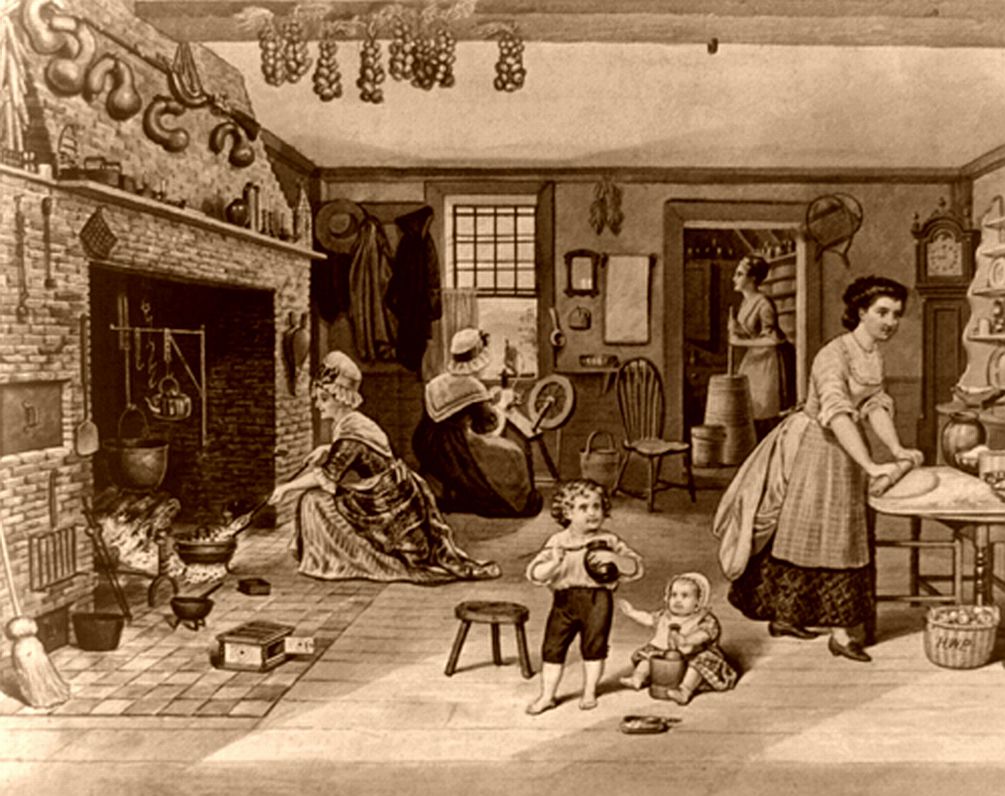

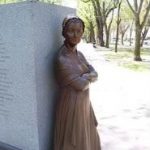
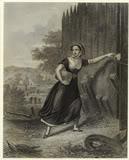
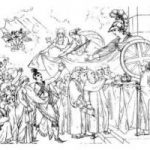
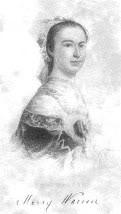
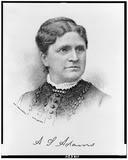
Hi there…
I’m doing an essay on colonial women and in the first line it mentions ”it was not uncommon for women to pursue various occupations, such as printers, innkeepers, merchants and teachers”. I was wondering if you happen to know of any primary sources that support that claim. It would be very useful to have some resources to use in my essay.
Thanks
I really enjoyed reading this, especially on Independence Day. Thanks for this fine piece of writing.
This “fine piece of writing” was so long that I ran 3 marathons while reading it and I’m not halfway done.
Enjoyed that!
For what is perhaps the darkest woman’s tale of the Revolution, please check out my book, Bathsheba Spooner: A Revolutionary Murder Conspiracy. Spooner, when five months pregnant, was hanged alongside her three British and American accomplices; she was the first woman executed in the new US (4.7 of 5 stars at Amazon).
Thank you